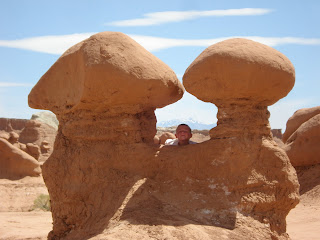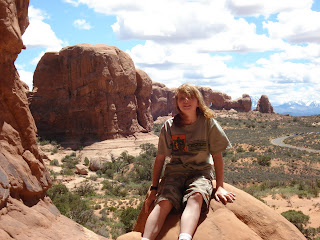The unusual stone shapes in Goblin Valley result from the weathering of Entrada Sandstone. They consist of debris eroded from former highlands and redeposited on a former tidal flat of alternating layers of sandstone, siltstone and shale. The rocks show evidence of being near an ancient sea with 1) the ebb and flow of tides, 2) tidal channels that directed currents back to the sea and 3) coastal sand dunes.
Joint or fracture patterns within the Entrada's sandstone beds created initial zones of weakness. The unweathered joints intersected to form sharp edges and corners with greater surface-area-to-volume ratios than the faces. As a result, the edges weathered more quickly, producing the spherical-shaped 'goblins'.
Joint or fracture patterns within the Entrada's sandstone beds created initial zones of weakness. The unweathered joints intersected to form sharp edges and corners with greater surface-area-to-volume ratios than the faces. As a result, the edges weathered more quickly, producing the spherical-shaped 'goblins'.






















































